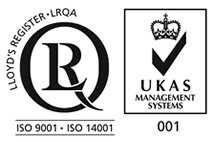
Main Products
Copyright 1998-2025 Firmetal Group All Rights Reserved. | Sitemap
The material properties of titanium make it an ideal material for many high-performance applications in aerospace, automotive and medical fields. It is characterized by high strength and plasticity, and has great application potential. It can play a role in fields such as aerospace, Marine engineering, consumer electronics and biomedical equipment, and is conducive to actively promoting sustainable development. 3D printing technology can effectively overcome the shortcomings of traditional processes and produce high-performance titanium alloys.
It can be used as a model or benchmark for other metal alloy manufacturing methods, and 3D printing technology can be utilized to enhance performance and create more possibilities. Including Ti64, Ti64ELI and TiCP alloys. Both Ti-6Al-4V(Grade 5) and Ti64ELI are renowned light alloys, featuring excellent mechanical properties and corrosion resistance, as well as low specific gravity and biocompatibility. TiCP is a commercial pure titanium alloy with excellent strength-to-weight ratio, corrosion resistance and ductility..
Ti64 is a well-known light alloy, featuring excellent mechanical properties and corrosion resistance, as well as low specific gravity and biocompatibility. Ti64 grade 23 is a well-known light alloy, featuring excellent mechanical properties and corrosion resistance, as well as low specific gravity and biocompatibility..
Modern 3D printing technology can produce complex functional metal parts in one step, which helps save time and costs in product development. This technology also breaks through the limitations of traditional methods and is capable of manufacturing metal parts with special structures and compositions. In terms of quality, the 3D printing manufacturing method can adjust the microstructure of metal alloys, not only making them stronger, more plastic and more corrosion-resistant, but also enabling the production of low-cost, sturdy and complex-structured metal parts internally. This research breakthrough provides a comprehensive and sustainable material design strategy for 3D printing manufacturing methods, opening up broader application prospects.